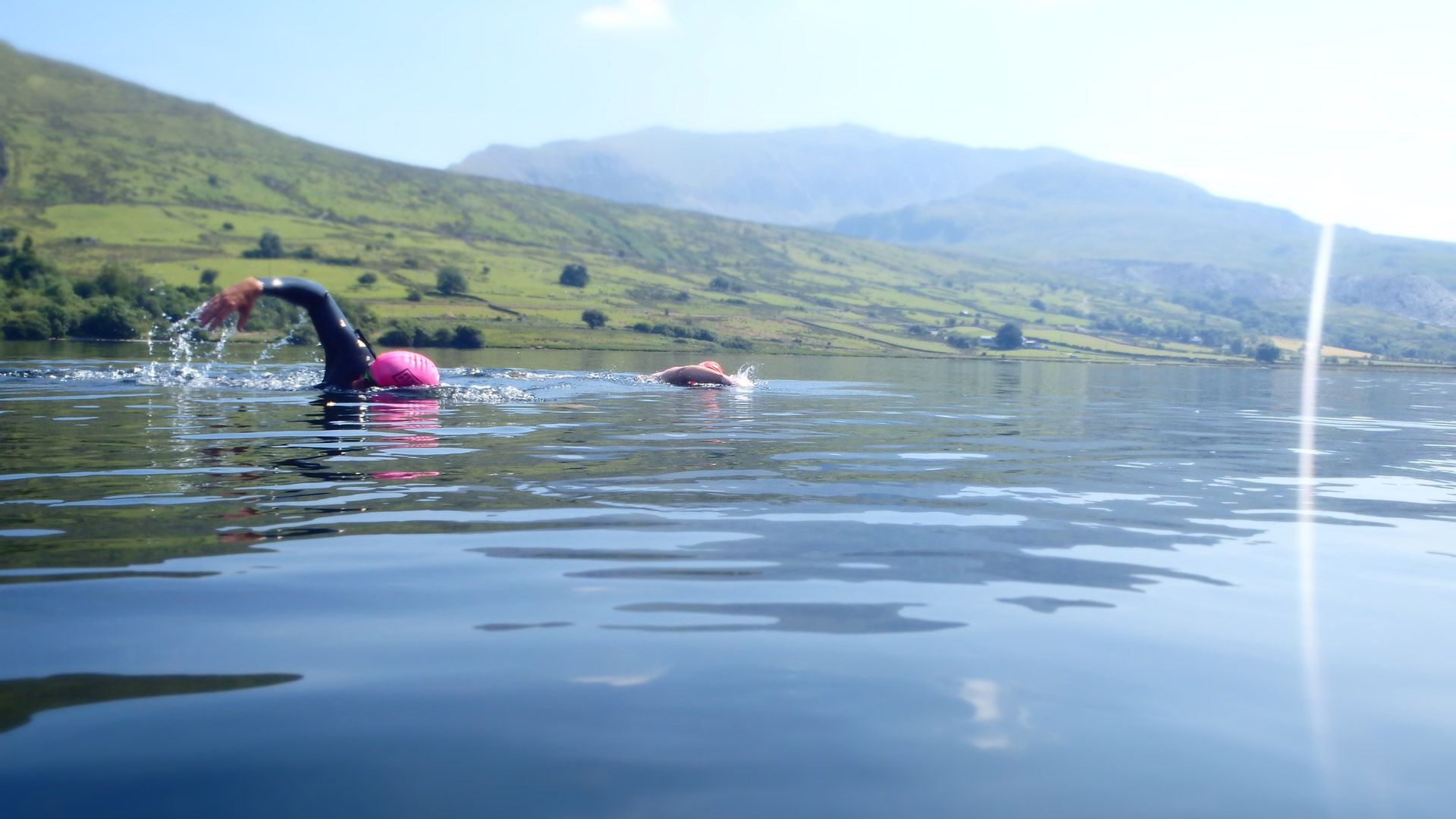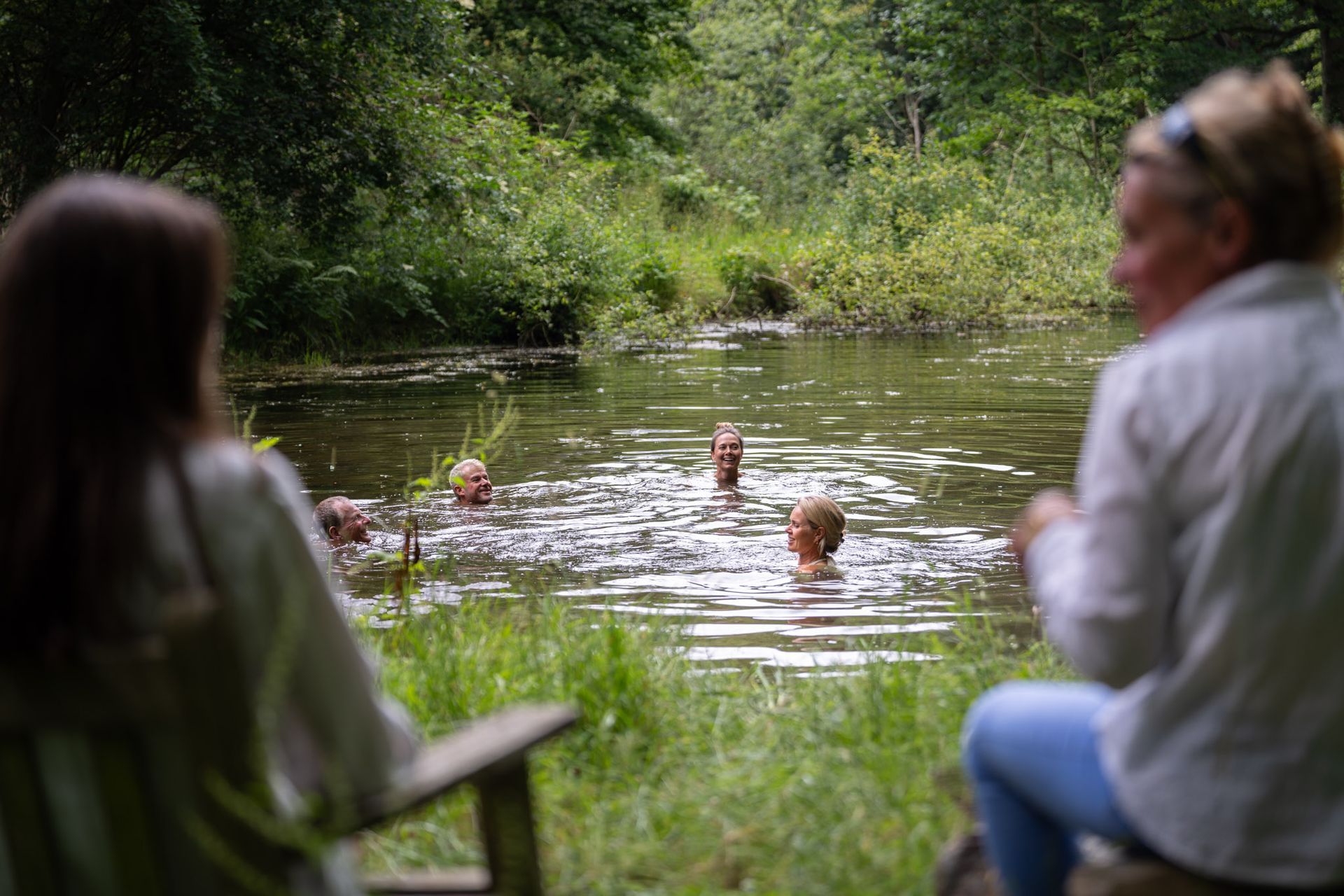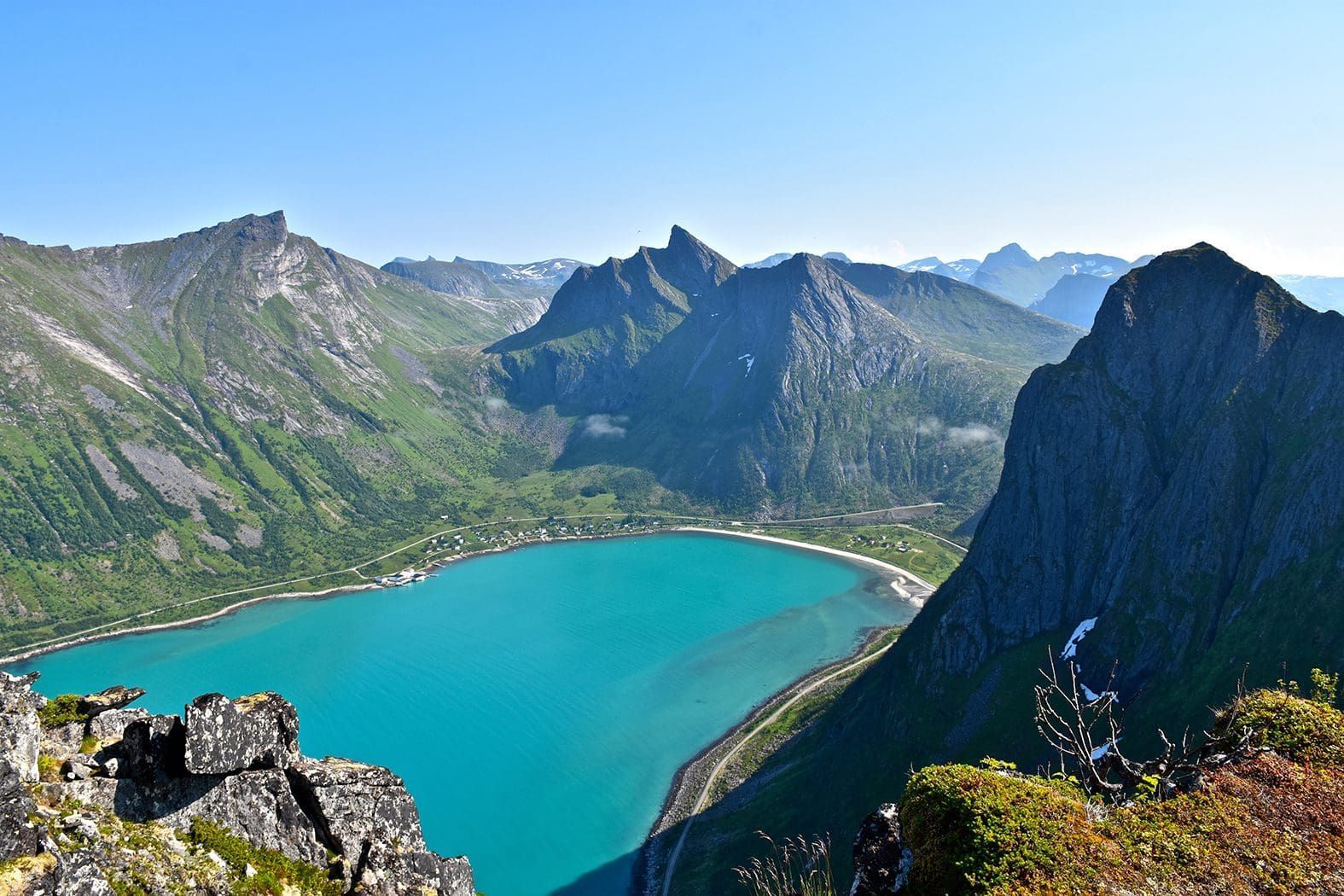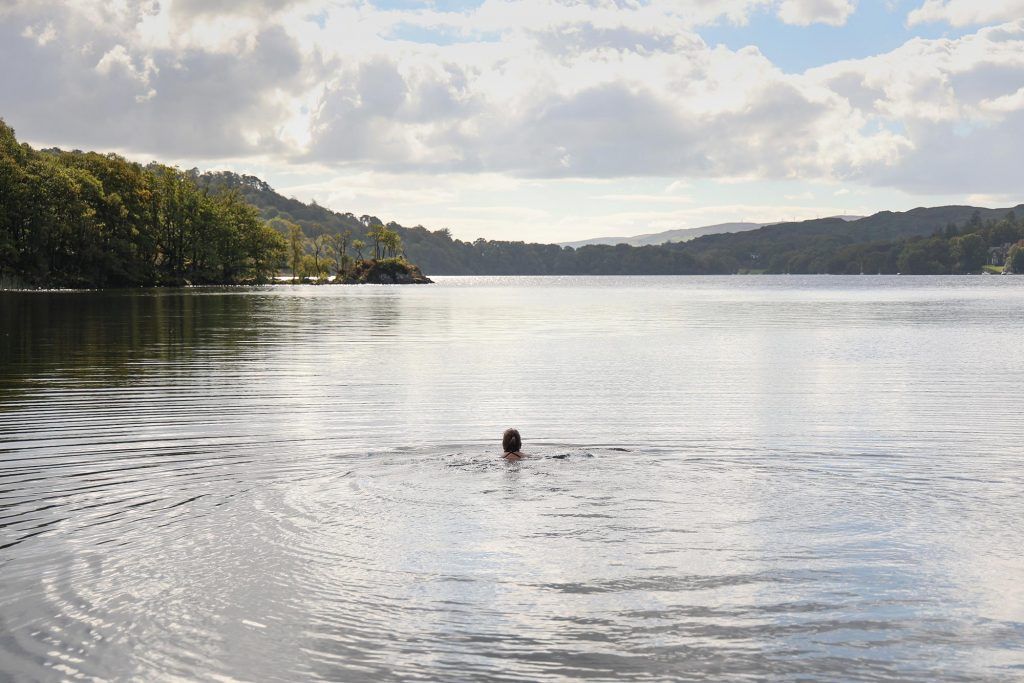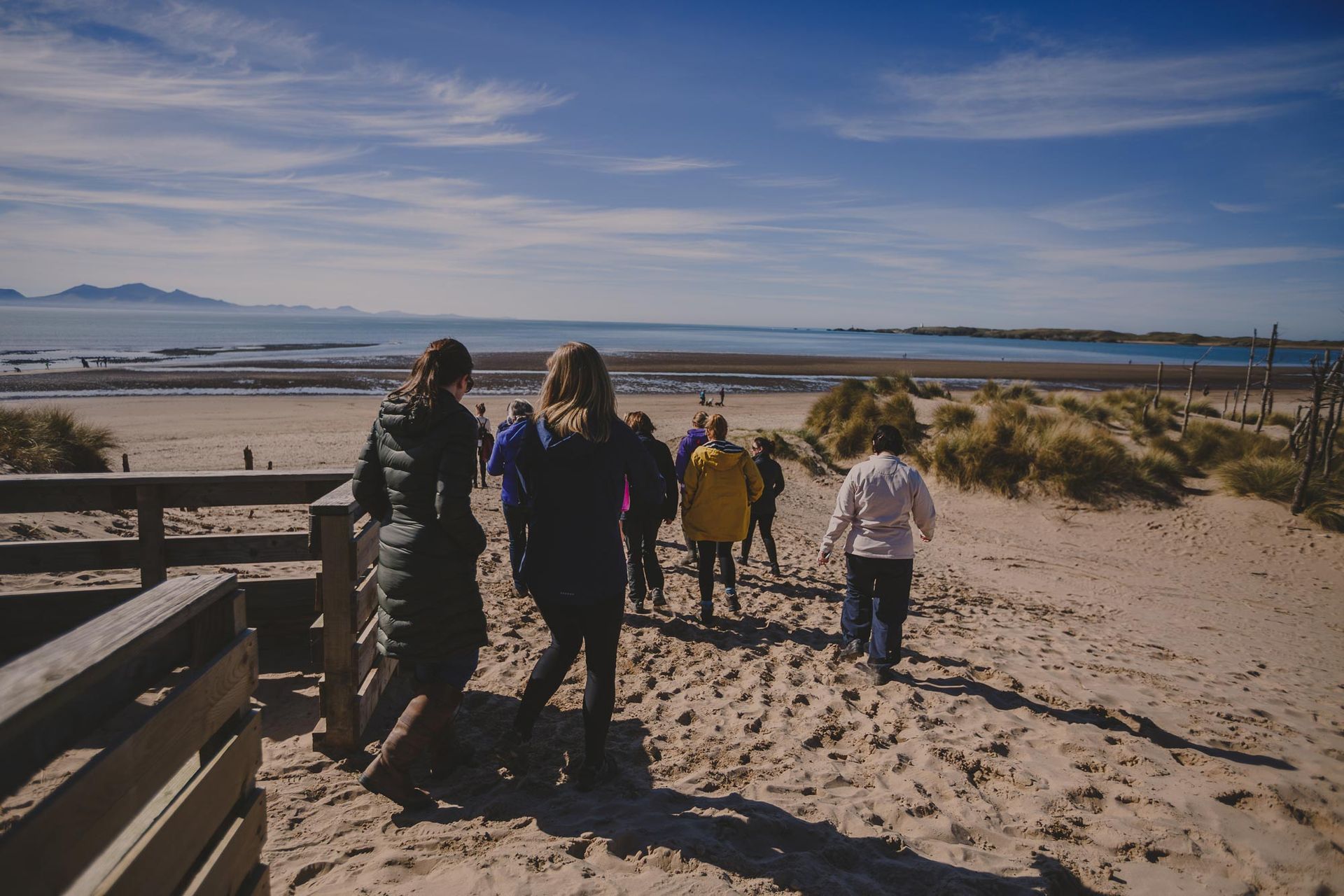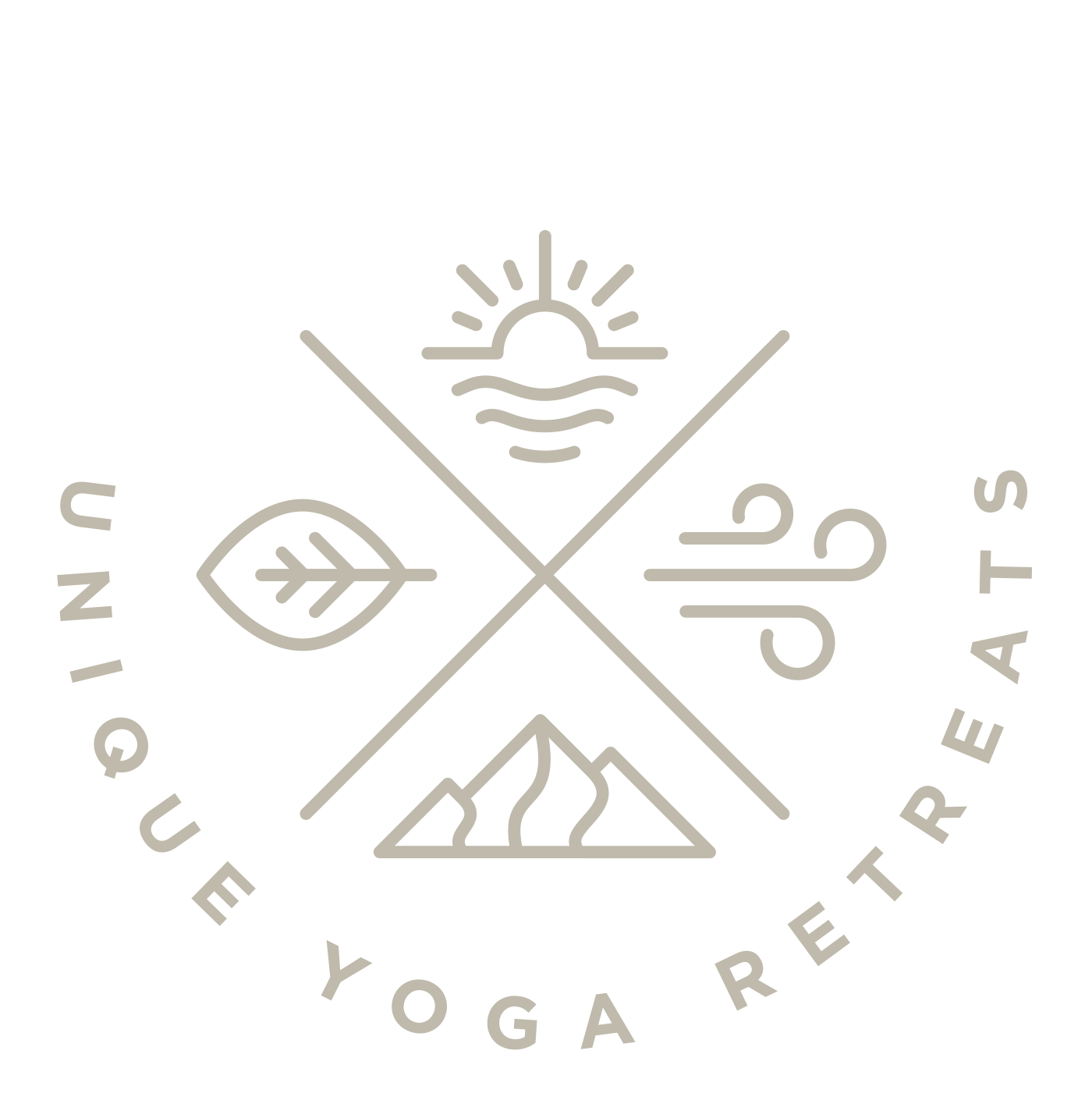The Complete Guide to Wild Swimming and Yoga
DISCOVER
What Is Wild Swimming?
Wild swimming represents humanity's oldest relationship with water, the practice of swimming in natural bodies of water rather than constructed pools or controlled environments. This ancient activity connects modern practitioners with thousands of years of human tradition, from the sacred bathing rituals of ancient civilisations to the hardy Victorian sea bathers who championed outdoor swimming for health and vitality. Today, wild swimming encompasses any swimming undertaken in natural waters: oceans, seas, lakes, rivers, tarns, lochs, fjords, and coastal waters where humans enter the element that covers most of our planet.
Unlike pool swimming with its chlorinated predictability, wild swimming embraces natural variability. Water temperatures fluctuate with seasons and geography, ranging from tropical warmth approaching 30°C to Arctic cold below 5°C. Currents, tides, waves, and weather create dynamic conditions requiring adaptability and respect. The lake swimmer gliding across mirror-still waters at dawn experiences something fundamentally different from the ocean swimmer navigating coastal swells, yet both participate in the same essential practice: immersion in nature's aquatic realm.
The Health Benefits of Outdoor Swimming
Swimming in natural waters provides full-body exercise that builds cardiovascular fitness, muscular strength, and flexibility without the joint impact of land-based activities. The water's resistance creates natural strength training, engaging muscles throughout the body in coordinated movement patterns. The horizontal body position during swimming improves cardiovascular efficiency while distributing effort across major muscle groups, making it accessible for various fitness levels and ages.
Open water swimming particularly enhances mental wellbeing through immersion in natural environments. The sensory experience of natural water; feeling currents, observing wildlife, hearing bird calls, watching light patterns shift on the surface, creates mindful presence that reduces stress and anxiety. Many outdoor swimmers describe their practice as moving meditation, where focused attention on breath and movement cultivates the centred consciousness sought through traditional meditation practices. The combination of physical exercise, sensory engagement, and natural beauty creates a comprehensive wellness approach addressing both body and mind.
The practice also builds exceptional stress resilience and emotional regulation. Regular outdoor swimming requires showing up despite resistance, managing discomfort through breath control, and maintaining focus amid challenging conditions. These skills transfer directly to managing life stress, with swimmers reporting improved ability to handle work pressure, relationship challenges, and general difficulties. The enforced presence that natural water swimming demands provides valuable counterbalance to the distracted, multi-tasking patterns dominating contemporary life. Many practitioners describe wild swimming as their most effective wellness practice, providing both immediate benefit and cumulative long-term transformation.
OUR SWIMMING DESTINATIONS
NORWAY
ANGLESEY
NORTH WALES
OUR SWIMMING DESTINATIONS
Wild Swimming and Yoga: Complementary Practices
The integration of
yoga with wild swimming creates synergistic wellness benefits exceeding either discipline practiced alone. Both traditions emphasise breath awareness, present-moment consciousness, and mindful relationship between body and mind. Yoga practice prepares the body for swimming through dynamic sequences that generate internal heat, improve flexibility, and establish body awareness necessary for efficient technique. Post-swim yoga supports recovery through gentle stretches and supported poses that release muscular tension and restore flexibility.
Breath Control and Pranayama
Pranayama—yogic breath control—provides essential preparation for natural water swimming. Ujjayi breathing establishes steady rhythmic breath that calms the nervous system and supports controlled water entry. Breath retention practices (Kumbhaka) build respiratory capacity beneficial for swimming in waves or challenging conditions. The diaphragmatic breathing emphasised in yoga supports proper swimming mechanics, enabling fuller oxygen exchange and more powerful propulsion through engaged core muscles depending on proper breathing patterns.
The breath awareness developed through yoga practice translates directly to improved swimming efficiency. Swimmers who practice pranayama demonstrate better bilateral breathing capability, more relaxed stroke patterns, and superior breath-hold ability when navigating waves or rough water. This breath control also supports the mental focus required for longer swimming sessions, with steady breathing creating meditative rhythm that transforms swimming from mere exercise into contemplative practice. Many swimmers find their yoga breathing practice becomes most valuable precisely when swimming conditions challenge them most.
Physical Preparation Through Asana
Specific yoga poses directly prepare the body for swimming's physical demands. Shoulder openers improve the mobility required for efficient front crawl stroke. Hip flexor stretches support the extension needed for powerful kicking. Spinal twists maintain the rotation essential for bilateral breathing. Regular practice of these targeted poses prevents the postural imbalances and restrictions that commonly develop in swimmers, maintaining balanced body structure supporting efficient technique.
Dynamic yoga sequences create ideal pre-swim warm-up. Sun Salutations (Surya Namaskar) generate internal heat while mobilising all major joints through functional movement patterns. The flowing nature of vinyasa practice mimics swimming's continuous motion, preparing the cardiovascular system for sustained effort. Post-swim restorative yoga supports recovery, using gentle stretches and supported poses to release muscular tension, restore flexibility, and encourage deep relaxation. This integration creates complete training approach addressing cardiovascular fitness, flexibility, strength, and mental focus through complementary methods.
Mindfulness and Present-Moment Awareness
Both yoga and wild swimming cultivate present-moment awareness essential to wellbeing. In yoga, practitioners learn to inhabit the body fully, noticing subtle sensations and maintaining focus despite discomfort. This same skill proves essential in natural water swimming, where managing variable conditions requires steady attention and acceptance of challenging sensations without resistance. The yogic concept of Santosha (contentment) teaches practitioners to meet current experience without wishing it different—precisely the attitude needed when swimming in changeable natural conditions.
Wild swimming becomes moving meditation when approached with yogic mindfulness. Instead of swimming on autopilot, practitioners cultivate full sensory presence: feeling water sliding over skin, hearing natural sounds, watching light patterns shift, and noticing how breath and movement synchronise. This quality of attention transforms ordinary exercise into profound practice. The natural setting amplifies meditative quality—swimming through pristine landscape naturally draws attention outward to beauty and wonder, then inward to the swimming body's rhythmic movement, creating the stable-but-fluid awareness representing meditation's essence.
Upcoming RETREATS
-
Yoga & Swimming
DETAILS
APRIL 24-27 2026
LAKE DISTRICT • 4 DAYS
12 SPACES AVAILABLE
-
Yoga & Swimming
DETAILS
APRIL 27-1 2026
LAKE DISTRICT • 5 DAYS
12 SPACES AVAILABLE
-
Yoga & Swimming
DETAILS
JULY 17-22 2026
NORWAY • 5 DAYS
2 SPACES AVAILABLE
-
Yoga & Swimming
DETAILS
AUGUST 7-10 2026
ANGLESEY • 4 DAYS
12 SPACES AVAILABLE
Further Information
The History and Cultural Significance of Wild Swimming
Swimming in natural waters predates recorded history, with archaeological evidence suggesting humans have always inhabited coastal and riparian environments where swimming proved essential skill. Ancient civilizations including Greeks, Romans, and Egyptians celebrated swimming, building elaborate bathing complexes fed by natural water sources. Roman thermae combined heated pools with natural water plunges, recognizing therapeutic benefits that modern research now validates scientifically.
During Medieval period, European swimming declined due to disease fears and religious modesty concerns. However, Renaissance brought renewed interest in classical knowledge including Roman bathing traditions. By Victorian era, sea bathing gained medical endorsement with doctors prescribing seaside visits for various ailments. Coastal resort towns proliferated across Europe and Americas, with elaborate bathing machines enabling modest ocean entry. This medicalization of swimming established frameworks persisting today—the widespread belief in swimming's health benefits traces directly to Victorian medical advice.
The 20th century brought swimming pool proliferation and gradual decline of wild swimming as public pools offered controlled, supervised environments perceived as safer and more convenient.
However, recent decades have witnessed remarkable wild swimming renaissance. Growing environmental awareness, desire for authentic nature connection, and reaction against over-mediated urban life have driven millions back to natural waters. Books, social media communities, and organised events have normalised what was once considered eccentric behavior.
Today, wild swimming represents lifestyle movement emphasizing environmental awareness, mental health benefits, and community connection alongside physical exercise.
Wild Swimming Equipment Guide
Swim caps provide thermal protection without full wetsuit commitment. The 2-3mm thickness available in most swim caps retains significant heat that otherwise escapes through the highly vascular scalp. Many swimmers find caps enable extended swimming while maintaining sensory immediacy. Bright colors serve dual purpose as thermal protection and visibility enhancement. Silicon caps provide less insulation but remain popular for warmer water or among those finding neoprene caps uncomfortably tight.
Various accessories enhance wild swimming depending on individual preferences and conditions. Swimming goggles protect eyes during extended exposure, though many experienced swimmers prefer swimming without goggles to maintain full sensory immersion. Nose clips help swimmers uncomfortable with water entering their nose. Swimming watches or fitness trackers monitor duration, temperature, and distance for those interested in data. Waterproof phone pouches enable photography without device risk.
Post-Swim Warming Equipment
Changing robes revolutionized post-swim comfort for wild swimmers. These oversized, insulated, waterproof garments allow changing anywhere while providing immediate warmth. The ability to remove wet costume inside the robe while immediately gaining thermal protection substantially improves comfort. Various manufacturers offer versions from basic to luxury materials, with quality changing robes lasting for years and transforming the post-swim experience.
Multiple warm layers including thermal base layers, fleece or wool mid-layers, and windproof outer shells enable rapid temperature restoration. Weather can change quickly in natural environments, with calm conditions suddenly becoming windy or rainy—prepared swimmers carry extra layers regardless of initial conditions. Insulated footwear prevents heat loss through feet, while hats retain critical head warmth. Thermos flasks with hot drinks provide welcome internal warming, accelerating comfortable temperature recovery.
Building Sustainable Wild Swimming Practice
Establishing wild swimming as lifetime practice requires systematic progression and realistic goal-setting. Beginners should start during warmer months when water temperatures provide forgiving conditions for learning proper breathing control and technique. Initial swims might last only 2-3 minutes, focusing on calm entry, controlled breathing, and safe exit rather than distance or duration. This conservative approach prevents negative experiences that might discourage continued practice.
Progressive acclimatisation enables gradual extension of swimming time and eventual year-round practice. Most swimmers find that consistent twice-weekly immersions allow the body to maintain adaptation without excessive stress, though individual variation exists. Some practitioners thrive on daily swimming, while others prefer less frequent but longer sessions. Keeping a swimming log documenting water temperature, air temperature, duration, and subjective experience helps swimmers track progression and identify personal patterns.
Integrating wild swimming with complementary practices including yoga, meditation, or breathwork creates holistic wellness system greater than any single element. The discipline developed through regular yoga practice translates directly to swimming commitment. Many swimmers report that establishing regular water practice catalyses broader lifestyle changes including improved nutrition, better sleep habits, and enhanced stress management. The natural rhythm of seasonal swimming connects practitioners to larger natural cycles, fostering ecological awareness and mindful living extending far beyond the swimming itself.
The Wild Swimming Community
Wild swimming's recent popularisation has spawned vibrant communities worldwide, with informal groups meeting regularly at favorite spots and formal clubs organizing events and training sessions. These communities provide newcomers with essential local knowledge while fostering friendships built through shared challenge and mutual support. The vulnerability of standing in swimming costume in challenging conditions creates unusual intimacy, with conversations flowing easily among swimmers who might never interact in conventional social settings.
Social media platforms host numerous wild swimming groups where members share conditions reports, organize spontaneous swimming meetups, and offer encouragement to nervous beginners. These online communities extend the in-person connections, providing year-round engagement even when swimming frequency declines. However, experienced swimmers caution against allowing online validation to drive unsafe behavior, as temptation to post dramatic swimming photos can lead to risk-taking in hazardous conditions. The most mature swimming communities emphasize safety and inclusion over performative bravery, celebrating consistent practice and mutual care rather than extreme challenges.
The growth of commercial wild swimming experiences including guided tours, coaching sessions, and swimming holidays has made the practice accessible to people who might feel intimidated by independent exploration. These services provide proper safety oversight, equipment advice, and location knowledge that accelerate the learning curve while ensuring beginners avoid common mistakes. Yoga-swimming retreats represent natural evolution of this trend, combining professional yoga instruction with guided wild swimming under expert supervision. These experiences particularly suit people wanting immersive introduction to both practices within supportive group environment, often catalysing long-term commitment to regular practice.
Environmental Stewardship and Conservation
Wild swimmers bear particular responsibility for environmental protection, as our practice depends entirely on healthy natural waters. Unlike pool swimmers who can continue regardless of ecological conditions, wild swimmers' access to clean, safe waters requires active conservation efforts and responsible use practices. The wild swimming community increasingly recognizes this responsibility, positioning swimmers as stakeholders in water quality protection and environmental advocacy.
Leave No Trace principles form foundation for responsible wild swimming. This means removing all litter, even organic waste like fruit peels that decompose slowly in aquatic environments. Never introducing soaps, shampoos, sunscreen, or other chemicals into natural waters—these substances harm aquatic life even in small concentrations. Avoiding disturbance to wildlife, particularly during sensitive breeding seasons when shore-nesting birds and spawning fish are vulnerable. Respecting riparian landowners and other water users, maintaining positive relationships essential for continued access.
Water quality protection requires collective advocacy beyond individual behavior. Agricultural runoff containing fertilizers and pesticides pollutes many waterways. Sewage overflow incidents during heavy rain contaminate coastal and river waters. Wild swimmers can contribute to protection efforts through supporting conservation organizations, participating in citizen science water quality monitoring, joining beach and river clean-up events, and advocating for stronger environmental regulations. Our intimate knowledge of local waters makes us valuable watchdogs capable of noticing and reporting pollution incidents or ecological changes.
The Future of Wild Swimming
Wild swimming has evolved from niche pursuit to mainstream wellness practice over recent decades, with explosive growth particularly accelerating since 2020. This popularization brings both positive developments and concerning challenges requiring thoughtful navigation by the swimming community and relevant authorities. Understanding these dynamics helps swimmers contribute positively to the practice's evolution while protecting the natural environments enabling it.
Increased participation brings economic benefits to rural and coastal communities hosting wild swimming tourism. Local accommodations, cafes, outdoor shops, and guide services benefit from swimmer spending. Some regions have developed wild swimming as tourist drawcard, creating economic incentive for environmental protection. However, this commercialization also risks transforming wild swimming from accessible folk practice into commodified tourist experience. Balancing economic development with maintaining the authentic, accessible character that makes wild swimming valuable requires ongoing negotiation between commercial interests and community values.
Access questions increasingly arise as popular locations experience overcrowding. Some traditional swimming spots now see crowds that degrade both experience quality and environmental conditions. Questions emerge about capacity management, possible permits or reservations, and whether some locations should discourage swimming to protect sensitive ecosystems. Maintaining access while addressing overcrowding and environmental impact challenges all stakeholders to find creative solutions that don't simply exclude new swimmers. The wild swimming community's growth enables stronger advocacy for environmental protection, with substantial communities now able to influence policy meaningfully through organized campaigns and political pressure.
Wild Swimming Safety & Best Practice
Engaging in wild swimming can be a refreshing and invigorating experience, but it’s essential to prioritise safety. Understanding the risks and preparing adequately can make all the difference in enjoying the beauty of natural waters.
What is cold water shock?
Safe wild swimming requires knowledge, preparation, and respect for natural water environments. Cold water shock represents the primary hazard, occurring when sudden immersion in water below 15°C triggers involuntary gasping and hyperventilation. This physiological response can incapacitate even strong swimmers, making controlled entry essential.
How can I prepare for cold water swimming?
Acclimatisation should progress gradually, with initial exposures lasting only minutes before slowly extending duration as the body adapts. Swimmers should enter slowly, allowing breathing to stabilise before submerging fully, and never dive or jump into cold water without prior acclimatisation.
Water temperature monitoring helps swimmers make informed decisions. The Lake District's major lakes typically range from 4-8°C in winter, 8-15°C in spring and autumn, and 15-20°C during summer months. Smaller tarns and rivers often run several degrees colder.
What safety gear should I use?
Wetsuit use remains a personal choice, with many wild swimmers preferring skin swimming to maximise sensory experience, though beginners might choose neoprene for warmth and confidence. Regardless of choice, swimmers must exit before excessive shivering begins, as this indicates dangerous core temperature drop. Post-swim warming protocols include immediate drying, multiple warm layers including hat and gloves, and warm (not hot) drinks. The "afterdrop" phenomenon means core temperature continues falling for 15-30 minutes post-exit, requiring careful management.
Is it safe to swim alone?
Visibility equipment including bright swimming caps and tow floats ensures other water users can see swimmers, while also providing flotation for rest breaks. Swimming with companions provides mutual safety monitoring, though solo swimmers should inform others of their plans and expected return time. Understanding local hazards including boat traffic, submerged obstacles, and seasonal water level changes prevents accidents.
How can I be environmentally responsible while swimming?
The Lake District maintains bylaws regarding swimming in certain areas; respecting these regulations alongside basic water user courtesy ensures positive relationships between swimmers, boaters, and riparian landowners. Responsible wild swimmers also practise environmental stewardship, removing any litter encountered and avoiding disturbance to nesting birds or spawning fish during sensitive seasons.
Stay Safe, Swim Smart
By following these essential safety guidelines, you can enjoy the thrill of wild swimming while ensuring your well-being and that of the environment. Always prioritise safety and respect for nature.
Wild Swimming and Yoga Retreats Worldwide
Zestlife offers expertly curated wild swimming and yoga retreats in spectacular locations worldwide, each chosen for exceptional swimming waters, stunning natural beauty, and cultural richness. Our retreats accommodate all experience levels, from complete beginners to experienced practitioners seeking new challenges and community connection. Each retreat features daily yoga sessions adapted to complement wild swimming, with morning practice preparing body and mind for water immersion and evening restorative sessions supporting recovery.
Guided wild swimming sessions led by qualified coaches ensure safety while introducing participants to diverse swimming environments and techniques. We teach proper water entry, breathing control, and navigation skills essential for confident open water swimming. Small group sizes ensure personalised attention with instruction adapted to individual ability levels. Our inclusive approach welcomes nervous beginners alongside experienced swimmers, with modifications enabling everyone to participate successfully while being appropriately challenged.
Our retreat locations span diverse geographies, from Norwegian fjords to Mediterranean waters, from Yorkshire valleys to Morocco's Atlantic coast. Multiple retreats annually across different seasons enable participants to experience how practice adapts to changing conditions.
ready to dive in?
Book Your Swimming Adventure
Reserve your place on a Zestlife yoga and wild swimming retreat today. Experience the exhilaration of swimming in pristine mountain waters, the grounding focus of daily yoga practice, and the deep restoration of immersion in England's most beautiful landscape.
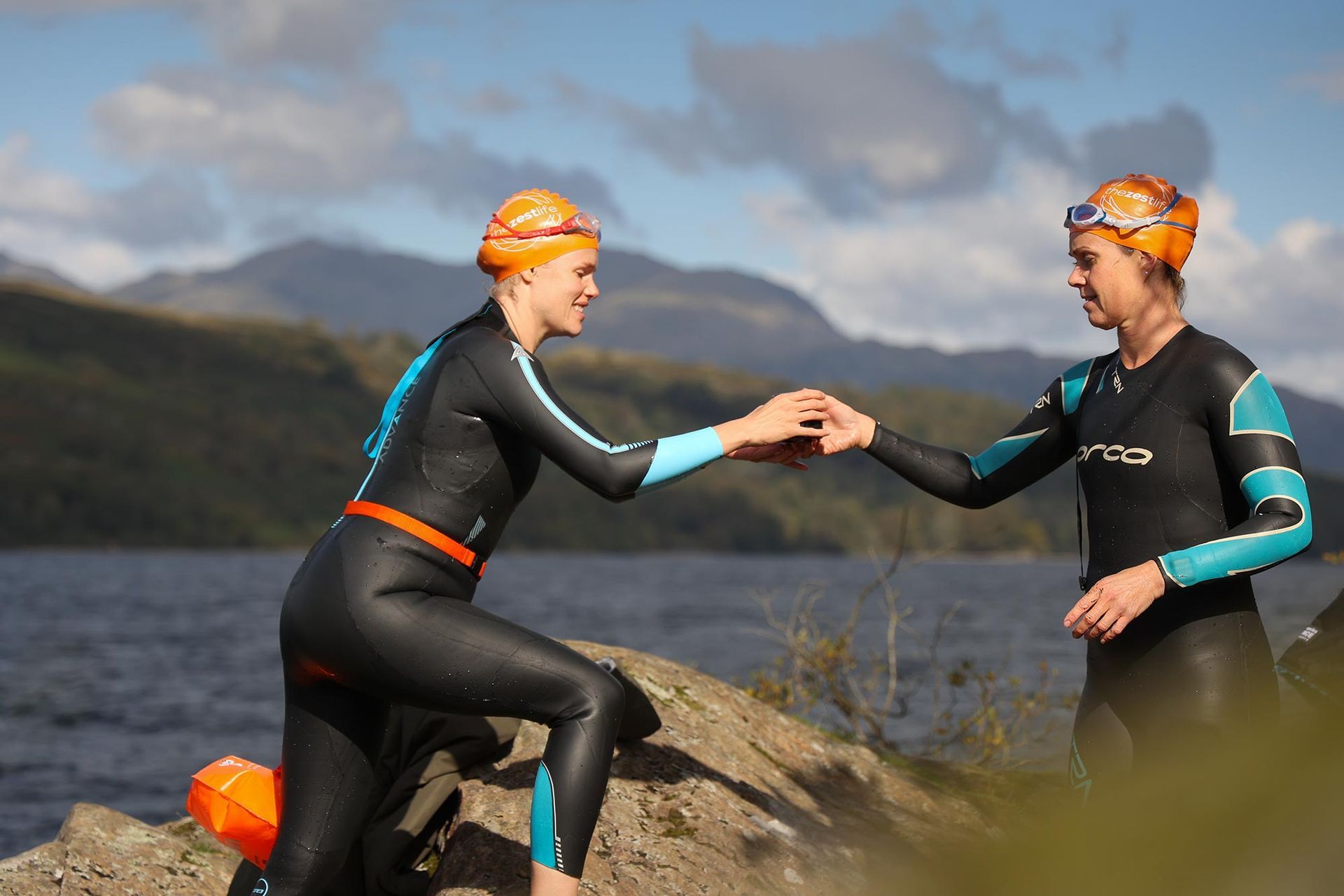
Got any queries
Just ask us
We’re here to help, sort booking or simply answer any questions you have.
Call & WhatsApp : 07424 410 133
Email : info@zestlife.co.uk
Keep up to speed


